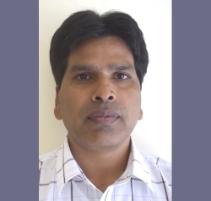Book details challenge of teaching robots to read and reason
Published on 29 July, 2008
If you've ever struggled to read a doctor's handwriting, identify a man from a wom
Associate Professor Brijesh Vermaan, understand a regional accent or pick a forged signature, spare a thought for researchers trying to teach computers to do the same.
The race currently underway around the world to create technology that can read human handwriting, recognise individuals from their face or body and understand human speech is the subject of a new book by researchers Associate Professor Brijesh Verma of CQUniversity and Dr Michael Blumenstein of Griffith University.
"The book presents how to develop these technologies by applying statistical and intelligent techniques such as support vector machines, adaptive principle component analysis, neural networks, evolutionary ensembles, clustering ensembles, elastic matching, logic synthesis, morphological structure-based classification and fuzzy modelling," Dr Verma said.
For the book the pair have accepted 17 peer-reviewed chapters from experts around the world to present the latest advances in pattern recognition and machine intelligence, revealing that machine 'understanding' was proving a huge challenge.
"For example there are no successful commercial solutions available to deal with the problem of automated reading of totally unconstrained cursive handwriting from static surfaces such as paper forms, envelopes and documents," Dr Blumenstein said.
Drs Verma and Blumenstein are developing a handwriting recognition system based on 'neural networks' - an artificial brain-like system able to mimic the way a human brain reads.
They are working to teach the machine to look at contours and features located throughout the handwritten word, an operation the human brains perform instantly.
"A machine sees letters as discrete bits of information, so accuracy above 99% can be achieved for isolated printed numerals and characters. Results for cursive handwritten words have not been satisfactory."
"One of the main reasons for unsatisfactory results is due to errors in segmenting/extracting characters from cursive handwritten words," said Dr Verma.
"Unconstrained handwriting can be continuous or cursive, so the machine must work out where letters begin and end through an automated segmentation process.
"It has to 'de-skew' the word. Human writing slopes, so the machine has to work out if this is the case, then compensate.
"We don't write letters the same size, so it scales the letters. It has to eliminate 'noise' such as ink blots, smudges, underlines and marks on the paper."
Drs Verma and Blumenstein said cursive handwriting recognition systems were in demand by law enforcement agencies, financial institutions, postal services, and a variety of other industries in addition to the general public nationally and globally.
"It has applications in converting handwritten notes into editable electronic documents, authenticating documents, processing forms, reading postal addresses, digitising historical documents, processing bank checks, the verification of signatures, and in text readers for the blind.
"Our studies reveal while artificial neural networks-based techniques are advancing the state of the art, intelligent machines continue to prove a challenge."
The new book Pattern Recognition Technologies and Applications: Recent advances is published by Information Science Reference, USA.

